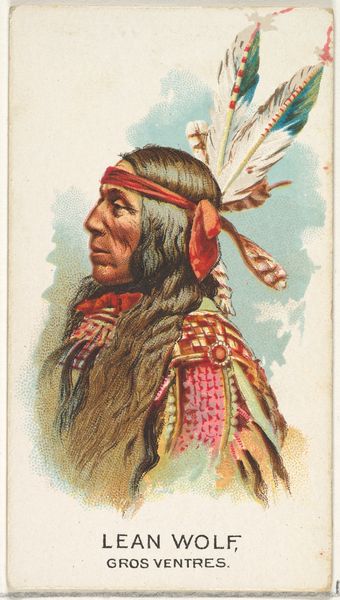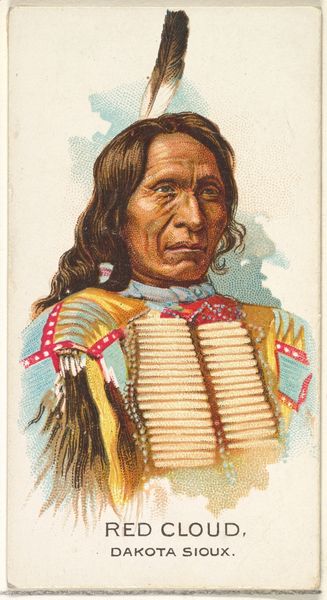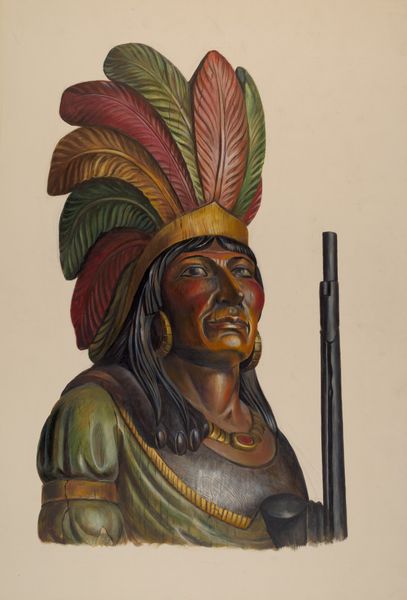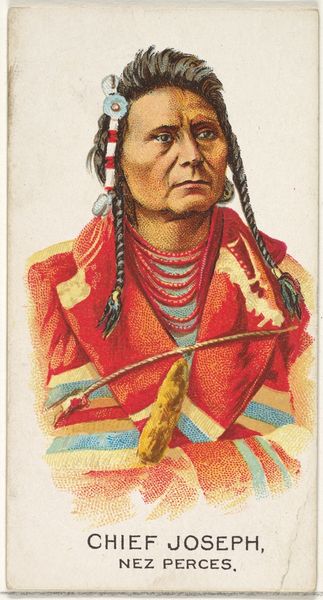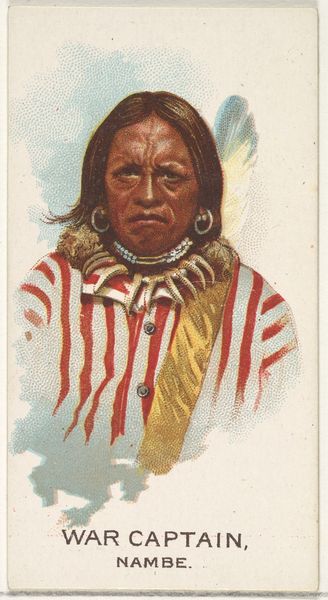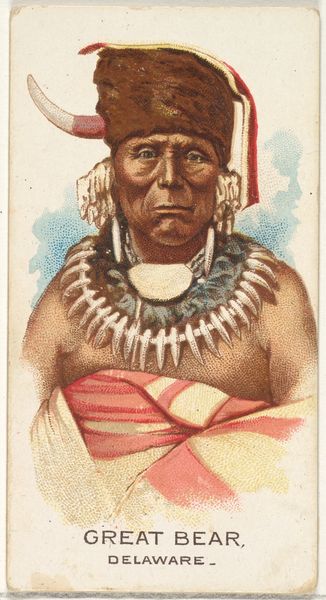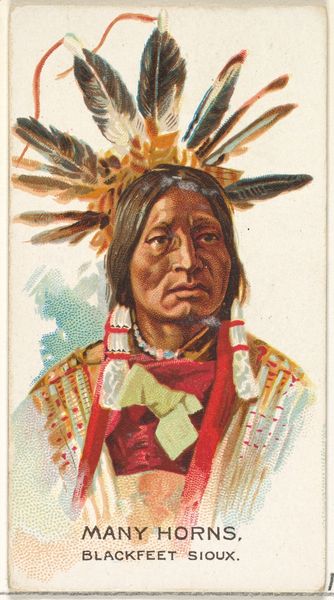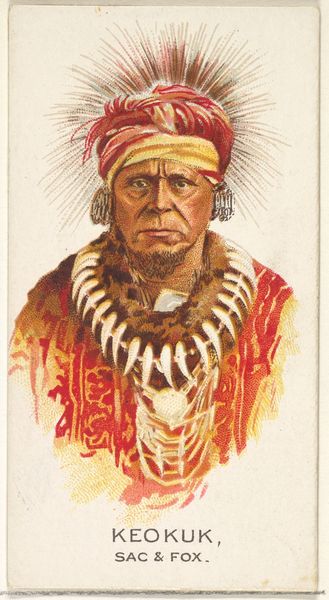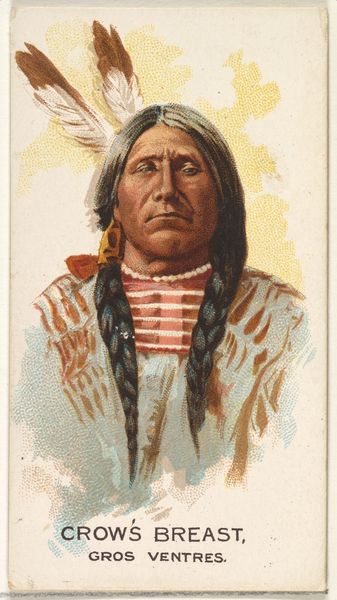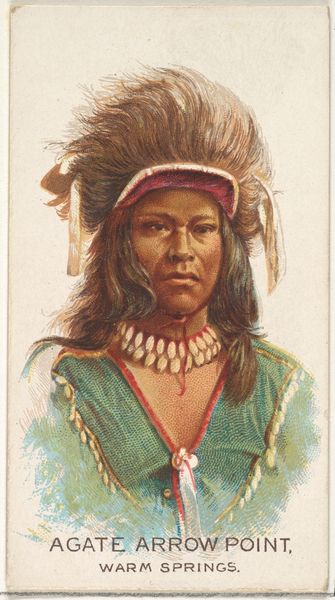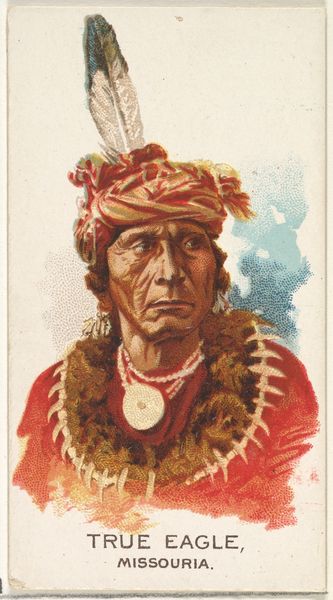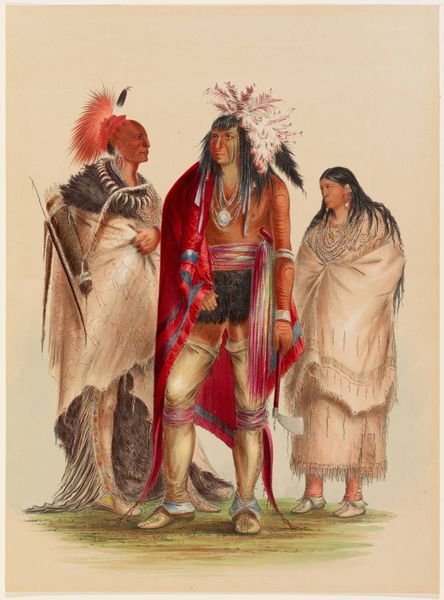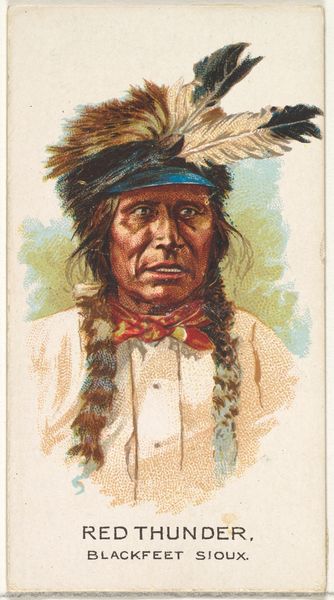
Mato-Tope, Adorned with the Insignia of his Warlike Deeds, plate 14 from Volume 2 of 'Travels in the Interior of North America' 1843
0:00
0:00
paper
#
portrait
#
paper
#
watercolour illustration
#
indigenous-americas
Copyright: Public domain
Here we see Karl Bodmer's portrait of Mato-Tope, created as part of his journey through North America. The symbols adorning Mato-Tope are not mere decoration; they speak volumes about his identity and status as a Mandan warrior. Observe the eagle feathers in his headdress, each likely representing a specific act of bravery. These feathers resonate with the classical laurel wreaths, emblems of triumph and honor passed down through antiquity. But more striking are the painted marks covering Mato-Tope's body, each one a testament to his martial exploits. These are akin to ancient Roman triumphal arches, visual records of victories inscribed upon the very flesh of the victor. Consider, too, the tomahawk he holds – a weapon, yes, but also a symbol of power and authority. Across cultures, weapons have always held a potent psychological charge, embodying both the fear of violence and the allure of dominance. Here, it is not just an instrument of war, but a badge of honor, a physical manifestation of Mato-Tope’s courage and prowess. The image resonates with a primal energy, a deep-seated connection to the cycles of conflict and honor that have shaped human societies.
Comments
No comments
Be the first to comment and join the conversation on the ultimate creative platform.

